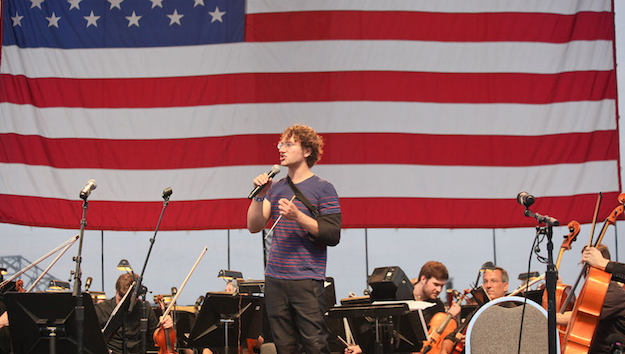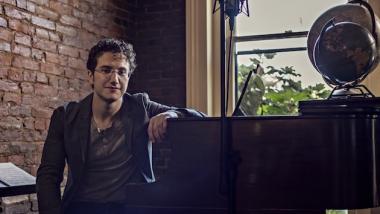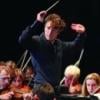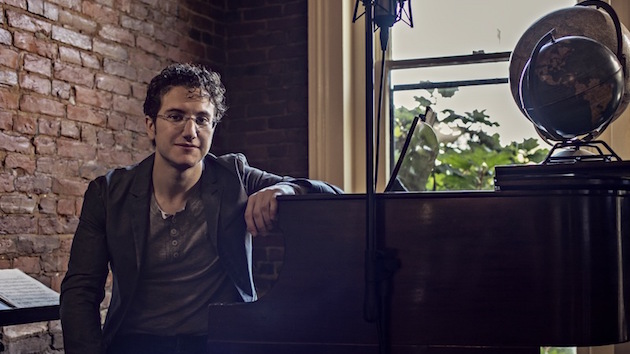
Birth of a Notion
No one is more puzzled by the bipolar culture of Kentucky politics than Teddy Abrams, the 29-year-old music director of the Louisville Orchestra.
“You’ve got this totally weird political spectrum in this state,” he told us the other day, describing the personality-obsessed focus of local politics and a quirky mélange of Republican and Democratic politicos, all set against a history of Whigs, No Nothings, Bluegrass conservatives, Blue Dog Democrats and Bourbon Democrats, and their post-reconstruction allies, the Redeemers.
In this last election, the Republican governor Matt Bevin predicted that if Hillary Clinton won the election there might well be violence: “I have nine children,” he said. “It breaks my heart to think that it might be their blood that is needed to redeem something, to reclaim something, that we through our apathy and our indifference have given away. Don’t let it happen.”
Kentucky voted for Trump over Clinton by two to one. The state has been described as a “theme park for Obama detractors.”
“In the last election for governor” (2015), Abrams went on, “people openly admitted that while they had benefited from Obamacare under Governor Beshear, they wanted Matt Bevin because he would roll that back and also because he opposes gay marriage and abortion. I just don’t understand why people would vote against their own interests that way.”

“It also blows my mind, because Louisville, and Lexington, are incredibly liberal (both mayors are democrats) while the rest of the state is conservative. In fact, the rest of the state sees Louisville the way the red part of America sees the coasts — as completely elitist, which is ironic, because of course the rest of the country hardly sees Louisville as liberal. But the point is that Kentucky has become a metaphor for America.”
For Abrams, this political bipolarity raises critical questions for cultural institutions in Louisville, which are often seen by conservatives as “resource hogs,” dominated by an elitist agenda, and benefitting only blue dots on the map.
Crossing the Great Divide
Since the November election, Teddy Abrams has begun to rethink his public responsibilities and in the process to imagine a new role for orchestras in bridging cultural and political divides.
I thought, ‘wait a minute, instead of focusing on how to get a larger share of the state budget — which by the way is next to nothing; I think we get $30,000 from the state — maybe we should focus on getting an orchestra to serve the entire state and start using culture to break down some of these divides …. Because this just can’t go on. It’s ridiculous: Here are people living right next to each other who can’t have a meaningful dialogue, and who assume nothing will ever change. So I keep thinking, ‘what can I do about that?’
Abrams has long been developing new venues for local musicians and once used his own house to present a public concert. He’s also been careful over the years to accept invitations to play with local musicians of all kinds, and so create a network of support. But since the November election, he’s begun to imagine ways to broaden his efforts and draw together the state’s different music constituencies.
Abrams’ new idea is to assemble a group of no less than 10 to 20 musicians, representing the states different musical traditions — not just musicians from the orchestra — and take them on a three-week tour around the state, barnstorming through small and medium-size towns, playing in college campuses, churches, community centers, libraries, barns, even out to “the hollers.” Each event would feature an hour-long concert followed by another hour of “get together” where the conversation with and among the audience might begin with music but could then go off in any direction. To any concern. No agenda; no expectation.
I would include rappers from Louisville but also Country and Western singers and Bluegrass string players. Innovative and respected musicians from all over the state. My sense is that these people would work together; I’ve never heard a musician say, ‘I won’t play with that person because I don’t agree with their politics.’ So you start with something that’s meaningful to people, something they agree on, something that can be unifying, and you get a dialogue going.
Abrams was inspired by a study showing that if people share a meal where they don’t discuss divisive issues and then afterward talk about things that challenge them, they often reach common ground, rather than just argue. Abrams is convinced he can do something similar with music.
“Some of these performances may only draw a small number of people but everyone deserves access to this approach. The object is not to ‘accomplish’ anything, nor is it an attempt to form a consensus, it’s just to begin a conversation that starts with music and then leads to broader topics.”
Abrams’ concern is that the project be presented accurately because any hint of agenda and people will shy away. “So where you play and what you play and the people involved are all very important. It has to be clear why we’re doing this.”
The Financing Piece
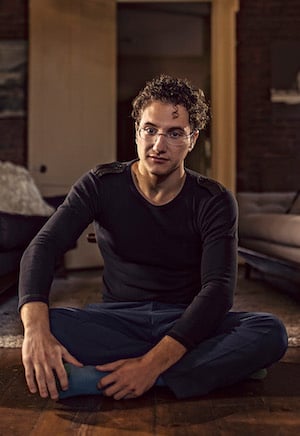
Abrams has yet to formally approach his board with this idea; he has no mandate and financing is still to be worked out. He has approached a small number of people, although not yet his close friend and mentor Michael Tilson Thomas, who he expects will have much to say. Nevertheless, Abrams is committed to a trial run next summer. If he can’t find backing initially, he’s willing to finance a pilot project himself.
“I don’t know how long it will take to raise the funds, but I see this not as a ‘nice’ thing that would have some incidental value, but as a necessary thing, a critical thing to be done now. It must have a high priority.”
His sense is that the smallest possible configuration for a tour would be 10 musicians, which he estimates would cost from $15,000 to $20,000. “If we toured the whole orchestra, which naturally I would love, it would probably cost between $200,000 to $250,000. That would be a stretch, yet, by the standards of the San Francisco Symphony or the New York Philharmonic, it’s nothing, That’s the fee for two shows on one of their tours”
Abrams’ funding strategy is to approach anyone whose interests are furthered by a ‘unified society.’ Universities, for example: The network of state colleges in Kentucky puts nearly every citizen within a 20-minute drive from a campus. Abrams thinks such a project would also draw support from corporations and labor unions. He believes he could even enlist the help of state government.
Talking to state government about putting on concerts is a dead end: they don’t care about concerts. There’s no investment return even if it’s the greatest concert in the world. Their response is, ‘what does that do for the state?’ But if you approach them and say, ‘listen, we’d like the Dept. of Transportation to let us use their flatbed trucks’ or ‘we’d like access to housing projects or developments.’ The idea is to find creative ways of engaging the state. Remember, there is money for the arts; it’s all a matter of budget description.
He would also approach the likes of Ford and Exxon. “It’s not about whether you agree with the company’s mission. The fact is, they have a responsibility for social well-being, which is why they respond to appeals after a catastrophe. But this is different, and it won’t work if you come to the corporate front door and say, ‘we want to take Brahms and Beethoven to the people; we’re coming from the city to educate the people.’ They’ll see it as condescending, they’ll see that as you coming from the elitist cities teaching rather than sharing.”
Politics and the Arts Organization
Abrams has gradually come to see himself as a political campaigner as much as a musician and conductor. His sense is that conducting alone is not the key; he’s got to go out and interact with people. He’s got to go to the fish fries and town halls and kiss the babies.
He’s been inspired recently while working on a 45-minute "rap opera" for the Louisville Orchestra based on the life of Muhammed Ali. “There’s a reason people loved him, and it’s not just his persona as a prize fighter; it has to do with the personal connection people felt toward him. That’s the point here: If someone can make a personal connection, you can get beyond the issues of the day to who you are at a human being. And that’s what art has to do — playing concerts, even if they’re interesting and innovative in Louisville but not reaching the rest of the state, that’s going to have minimal impact.”
Abrams emphasizes his conviction that it’s not his role to use the orchestra to tell people what to think — “as much as I would love to promote my own liberal agenda” — but rather to be a steward of possibilities.
I would argue that it’s just as wrong for me to use the office of music director to purport an ideology as it is for a politician to purport an ideology. After all, they’re supposed to be leaders not lecture us on morality. The very act of dialogue is the first step toward changing that, because the problem is not that we disagree but the manner in which we disagree. And this all seems to become worse with each passing generation as we construe an ever more frightening sense of each other.
This new politics of music is based on the notion that if an orchestra only responds to the interests of the core audience you find in every community, you’re missing an opportunity. As Abrams puts it, “if you’re only playing Shostakovich to appeal to those 12,000 to 20,000 people you’re doing it wrong. This is the secret! And that’s what we need to get at: How can you play Shostakovich 11 [Symphony] in a small Kentucky town, or for that matter in the most underclass-challenged, large coastal city, and have it be a meaningful experience.”
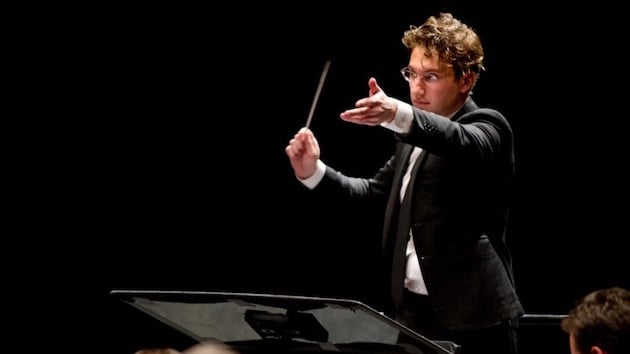
Abrams’ notion is that this approach needs to be adopted across the country: “This is just the conversation I had with Yo-Yo Ma a couple of weeks ago. He came to play with us and a lot of our conversation was about this idea. If orchestras could do something that the politicians, and even the museums and other arts organizations have been unable or unwilling to do, then we can really assert our significance in society; and that might challenge people’s understanding of who we are.”
“This is as much about what’s good for the orchestral community as it is for the country. Because when somebody says, ‘well, why do we have orchestras around anyway, think of the money we could save and put it to other use?’ the response is, ‘because they break down social barriers.’ It’s hard to argue with that. If $7 million in Louisville buys a way to dispel political barriers that have been unassailable until now, that’s a pretty strong argument, and that might be cause for people who fund the arts to consider, because then they can say to themselves, ‘we’re not just funding concerts anymore, we’re funding something that redefines society.’ Isn’t that where we want to be?”
A Challenge
Abrams sees his project in the larger context of arts activism, noting that large arts organizations these days often seem to miss the significance of what they encourage. “I have a friend working on a song cycle about homelessness; another friend, a visual artist, is looking at globalization, but you wonder why institutions don’t take all this work and find a way to be the vehicle to get it out. Instead of waiting 200 years for somebody to say, ‘well that was really an interesting look at the issues of the time, now let’s put it in a museum.’”
“The large arts organizations,” he continued, “have been so unwilling to think along these lines. They’ll do some outreach in underserved neighborhoods and pat themselves on the back. But this is no longer for show. It’s not something we can do to appease a particular donor. Or to get a little more money out of the state. This is something that’s actually vital for society. Think about what this could do, if you were to start dialogues that have never taken place at this level.”
You think of the vast resources that come into play, the network of orchestras, bands, groups, and ensembles that could be drawn into such an effort on a national scale. There are major orchestras in every state. According to census figures, there are at the very least 65,000 music directors, composers, musicians, and singers. It’s an army that could play a role in furthering these conversations.
“It’s such a mystery to me,” said Abrams, “that no politician ever talks about culture. In this last election, aside from Tim Kaine and his harmonica I never heard anything about it. I kept thinking, ‘wait a minute why doesn’t anyone address the importance of American culture? Why is it always ignored?’ The only topics are jobs and the economy? Of course, those are very important but why isn’t culture part of the discussion?
“My sense is that most people who go into politics are not culturally educated. They may be well read, but I don’t think they’ve spent much time thinking about the impact and power of cultural institutions and individual artists. Look at the political appointments made. Look at the NEA. It’s tremendously saddening.”
CORRECTION: The first version of this article incorrectly identified the Louisville Orchestra as the Louisville Symphony.
